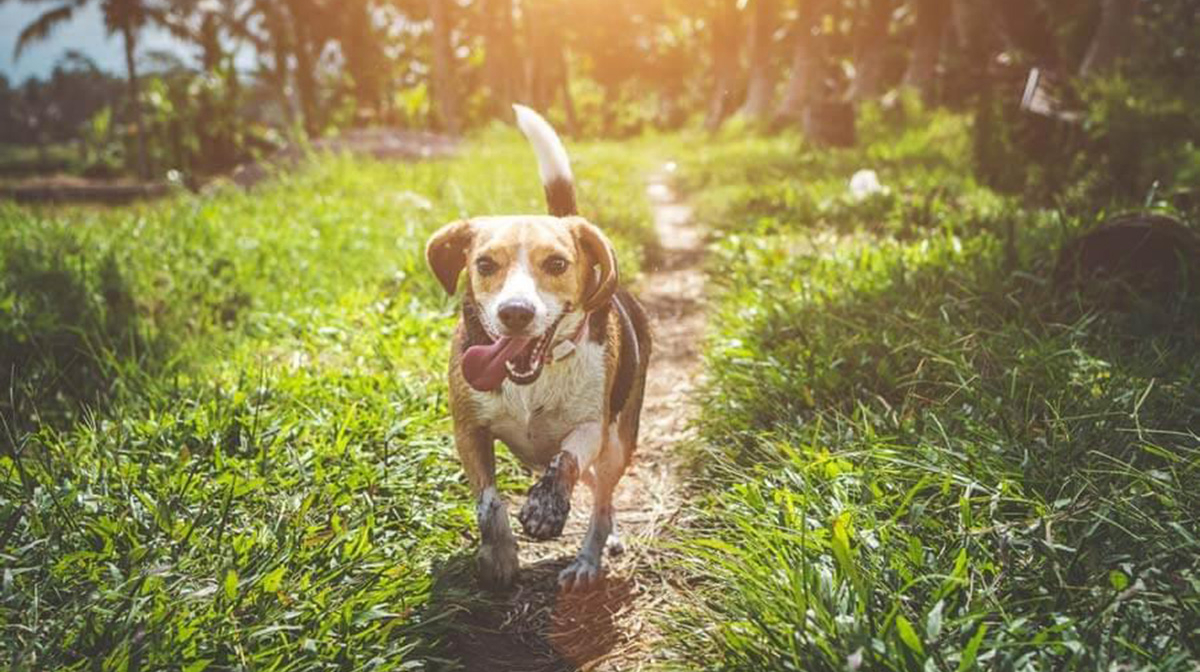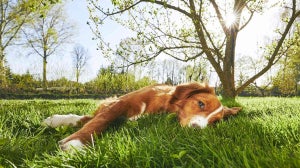
Dogs communicate to us through body language. Sometimes your puppy will tell you when it’s time for food, other times when they are ready to play; so, it is important owners learn these body language signals and behaviours. This is especially true of anxiety, as early signals can be confused with excitement and, if ignored, can lead to aggressive outbursts or the development of poor coping behaviours. Fortunately, once you know the signs, you can start to get a good idea of what makes your dog nervous. Then, depending on how they react, there are things you can do to help reduce your dog’s anxiety.
How do you know if your dog has anxiety?
The most common, yet subtle, symptoms of anxiety are:
Slow blinking and avoiding eye contact with whatever is making them nervous
Licking of lips in quick succession
Frequent yawning
Hunched body
Tail tucked between legs
Attempting to escape, including digging
Loss of bladder/bowel control
Howling
Another common sign of anxiety is whining or continuous barking. This often occurs when your dog is left alone, be it during the day or when they are put to bed at night. In extreme cases, anxious dogs will pace, tremble, and shake. In this state, dogs are likely to be desperate to escape whatever is scaring them. This fear can even lead to a loss of bladder or bowel control or the committing of self-injurious acts.
Types of anxiety
Common anxiety types, other than those caused by age or illness, include:
Separation anxiety
Dogs are highly social creatures who want nothing more than to spend time with the person they love most in the world; you. Consequently, leaving your dog alone for extended periods, including putting them to bed at night, can result in nervous behaviour in some individuals.
Past mistreatment
It is common for rescue dogs to exhibit anxious behaviour if they have a history of mistreatment. Depending on the dog and the type of mistreatment suffered, your dog might show nervous behaviours constantly or only when certain events remind them of their difficult past experiences.
Strange people/animals or a busy home
Some dogs can be possessive when it comes to their own pack (you and your family) and territory (your home). If the anxiety is left unaddressed, and a strange person or dog gets too close, it can result in your dog becoming aggressive. Even if your dog is familiar with everyone in the house, you should still be wary of signs of anxiety. Some dogs simply do not cope well with a busy house, and intervention may be needed to keep them calm.
Loud noises and/or storms
Fireworks, thunderstorms, and loud music or events can all scare some dogs, with every dog reacting differently depending on their level of fear.
How do you calm an anxious dog?
Be sympathetic
You cannot explain to a dog why something might not be scary or threatening, so comfort them instead. In the first instance, and in cases where you can separate your dog from whatever is causing the problem, do so. When you can’t remove the problem, like in a storm, adjust your habits so your dog isn’t put in an uncomfortable situation, or else try to minimise the problem. For instance, in the case of a storm, comfort your dog, close the curtains, and play music to dampen the noise. Once you have isolated the problem and calmed your dog, you can then work on desensitising your dog in a controlled environment (see below). Also, when dogs whine, it may be because they are calling for comfort or because they need to go to the toilet; rather than ignoring a crying puppy, you can help your young dog settle faster by letting them out for toileting, but avoid comforting your puppy too much in this situation, as it won’t help them learn to sleep through the night and might even serve to reward their behaviour. It is best to ease your pet slowly in to being left alone. Ensure that initial instances are positive (either give them food or a safe toy), and only leave them for short periods of time. Slowly build this up and keep sessions positive. The more adjusted they feel, the better they will cope with separation later in life.
Encourage mental and physical activity before/during anxious moments
If you are going to go out for a long period of time, leaving your dog on their own, precede it with physical activity to tire them out, like a long walk or play session. They may be less likely to feel anxious while they rest and recover their energy. This is something you can also attempt during an activity that might cause anxiety, as it may serve as a distraction. Activity feeders and puzzle toys can also help reduce anxiety by providing mental distractions, although it might not work with every dog.
Desensitise your dog
The best way to combat anxiety of the unfamiliar is by desensitising your dog to the anxiety-inducing stimulus. Before bringing a new person or animal into your home, allow your dog to meet them on neutral ground first. As your dog becomes more familiar, you can then try bringing the person/animal into your home (your dog’s territory). Over time, he or she will be happy to accept them. Desensitisation training works with a wide variety of stimuli, for example sounds and unfamiliar objects too.
Distract your dog with play and affection
For lesser cases of anxiety, your dog can still focus enough on what else is happening around them that you can distract them. Stroking them and introducing a toy can sometimes be enough for them to know it is okay for them to relax.
Anti-anxiety medication
If you have tried everything and your dog is still exhibiting extreme fearful or nervous behaviour in certain scenarios, discuss the problem with your vet. He or she may be able to recommend appropriate anti-anxiety medication. Medication can help increase the threshold at which your pet becomes anxious, so can help you begin desensitising them to a negative stimulus which previously wouldn’t have been possible.

Related Articles








